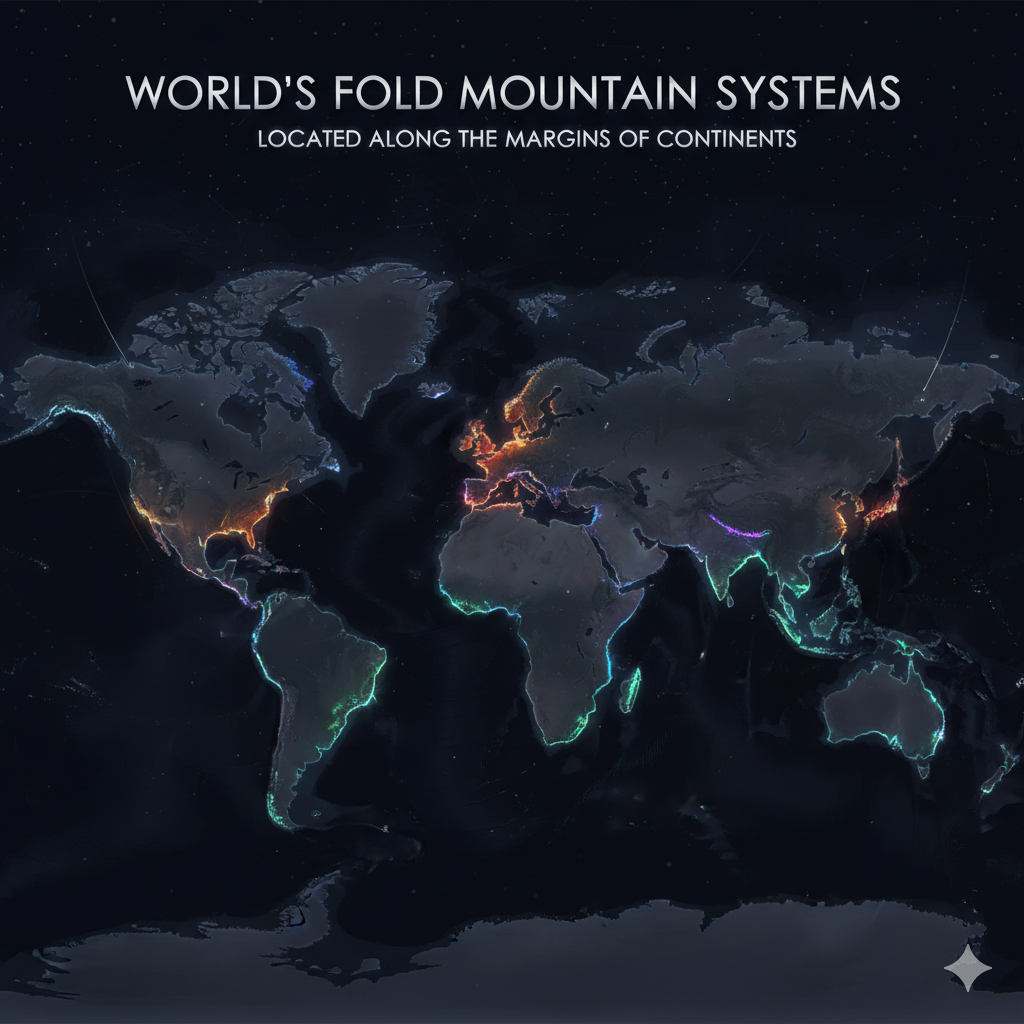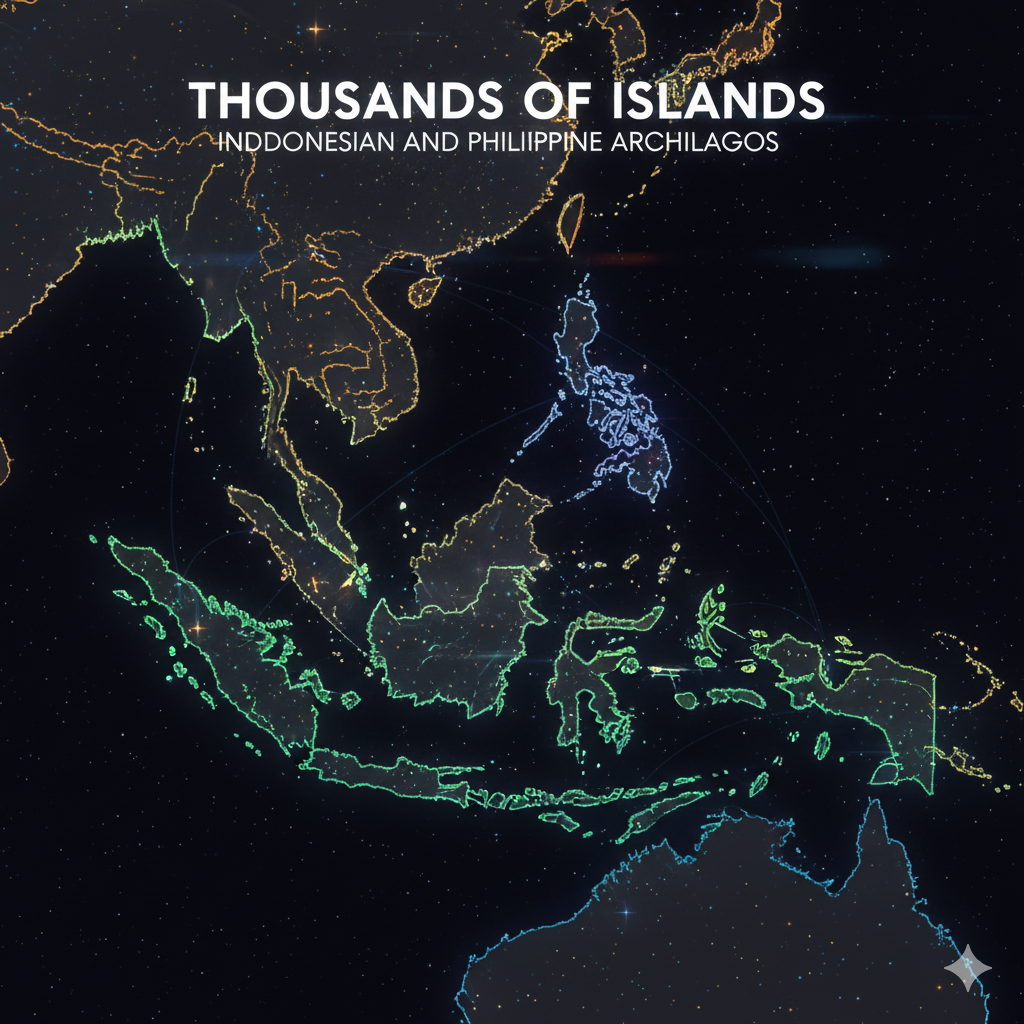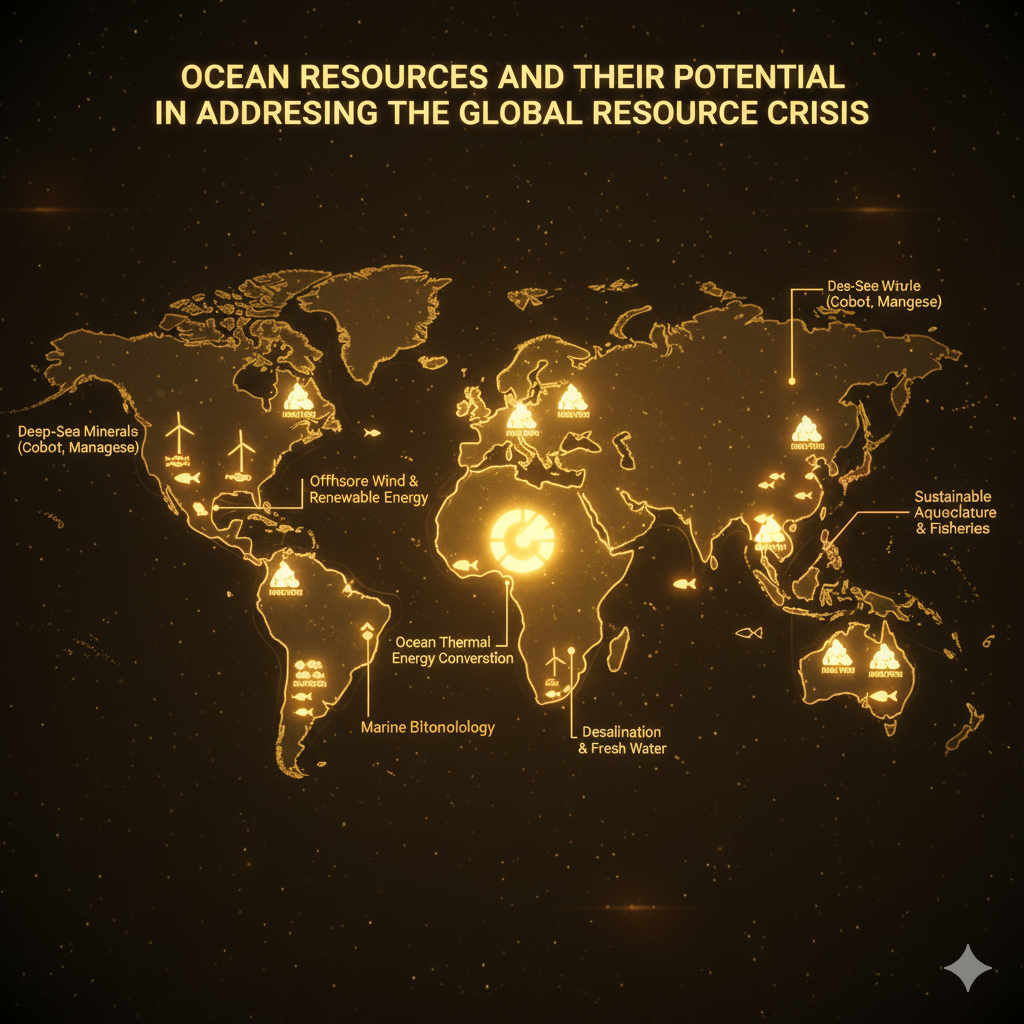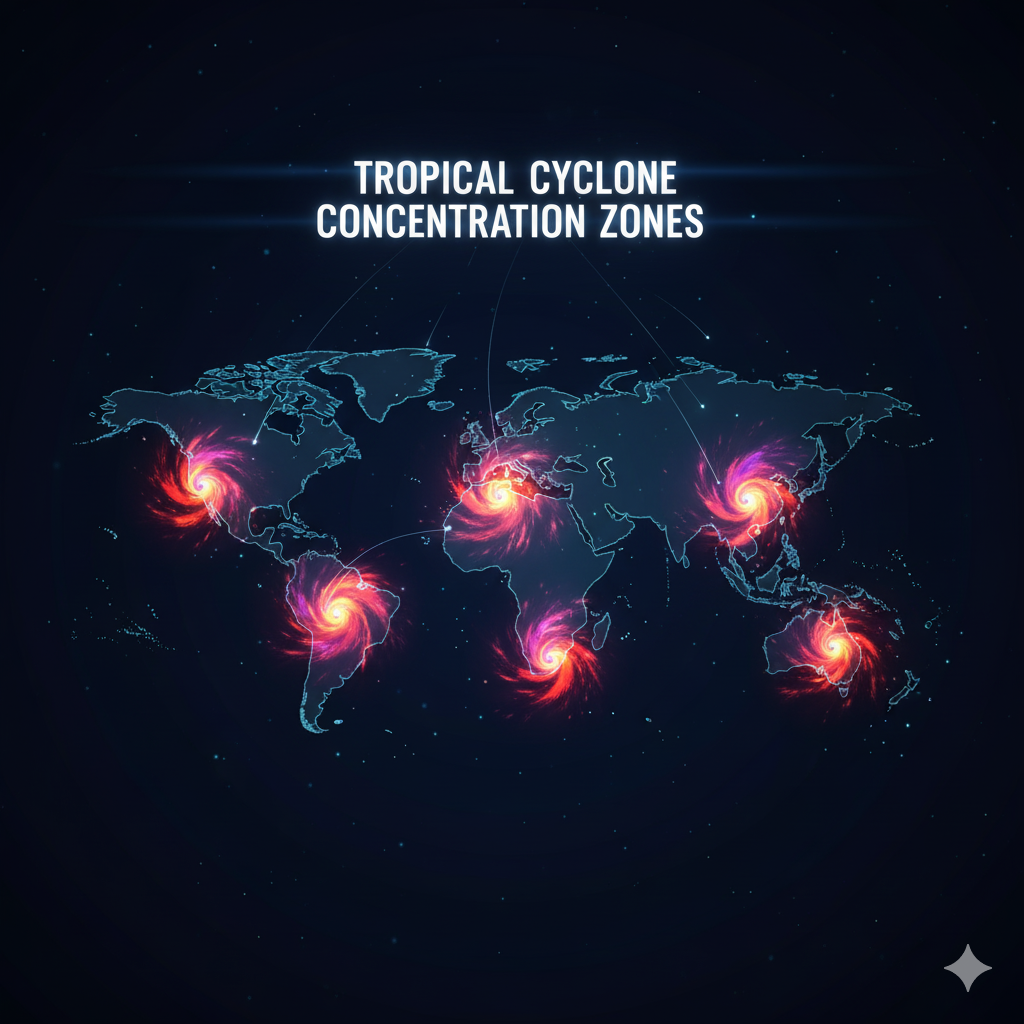Association Between Global Distribution of Fold Mountains, Earthquakes, and Volcanoes
Introduction
The surface of the Earth is shaped by a dynamic system of forces operating deep within its interior and acting upon its crust. Among the most striking landforms created by these forces are fold mountains, which rise dramatically along the margins of continents. These mountains, such as the Himalayas, the Andes, and the Alps, are not randomly distributed across the globe but are closely associated with the edges of tectonic plates. Their formation is linked with processes such as plate collision, subduction, and compression that occur primarily at convergent plate boundaries.
Moreover, the global distribution of fold mountains exhibits a strong association with earthquake-prone zones and volcanic regions. This relationship is not coincidental but results from the same tectonic processes that give rise to mountain building. Understanding this connection provides insight into Earth’s geology, seismic activity, and the risks faced by human societies living in these regions.
This essay explores why fold mountain systems are concentrated along continental margins and elaborates on their association with global patterns of earthquakes and volcanoes.
The Nature of Fold Mountains
1. Definition
Fold mountains are large mountain ranges formed when two tectonic plates collide and the sediments, deposited in geosynclines (large depressions), are compressed, folded, and uplifted.
2. Characteristics of Fold Mountains
- They consist of parallel ranges and ridges.
- The rocks are intensely folded and faulted.
- They are geologically young compared to block mountains or residual mountains.
- They are associated with seismic activity and volcanism.
- They often contain rich deposits of minerals and form natural barriers influencing climate and hydrology.
3. Examples of Major Fold Mountain Systems
- The Himalayas (Asia – formed by the collision of the Indian and Eurasian plates).
- The Alps (Europe – formed by the collision of African and Eurasian plates).
- The Andes (South America – formed by subduction of the Nazca plate beneath the South American plate).
- The Rockies (North America – related to subduction of the Pacific plate beneath North America).
Why Are Fold Mountain Systems Located Along the Margins of Continents?
The location of fold mountains along continental margins can be explained through plate tectonic theory.
1. Convergent Plate Boundaries
- At convergent boundaries, two plates move toward each other.
- If both are continental plates, their collision causes intense folding and uplift, as seen in the Himalayas.
- If an oceanic plate collides with a continental plate, the denser oceanic plate is subducted beneath the lighter continental crust. The sediments are compressed and folded, forming mountains like the Andes.
2. Geosynclinal Theory and Sediment Accumulation
Before plate tectonics was established, the geosynclinal theory explained mountain building as the result of compression of sediments deposited in geosynclines (large marine basins).
- These basins are often located at continental margins where rivers deposit sediments.
- Later, tectonic compression folds these sediments into mountain chains.
3. Marginal Locations Due to Tectonic Stress
The margins of continents are zones of maximum tectonic stress, where either:
- Oceanic crust is being subducted, or
- Continental crust is colliding.
This explains why interior continental regions rarely host fold mountains, except where ancient tectonic collisions occurred (e.g., the Urals in Russia).
4. Young vs. Old Fold Mountains
- Young Fold Mountains: Located along present-day plate boundaries (Himalayas, Andes, Rockies).
- Old Fold Mountains: Formed millions of years ago, now eroded and found inland (Aravallis in India, Appalachians in the USA).
Thus, the concentration of fold mountains along continental margins reflects the ongoing tectonic processes shaping Earth’s lithosphere.
Association Between Fold Mountains, Earthquakes, and Volcanoes
The same tectonic forces that create fold mountains also generate seismic and volcanic activity. The distribution of fold mountains coincides with seismic belts and volcanic zones.
1. Fold Mountains and Earthquakes
Why earthquakes occur in fold mountain belts:
- Crustal Compression: Stress builds up as plates collide, which is suddenly released as earthquakes.
- Faulting and Thrusting: Fold mountains are crisscrossed by thrust faults and reverse faults. Sudden movements along these faults trigger earthquakes.
- Example – Himalayas: Frequent earthquakes (Nepal 2015, Kashmir 2005) are direct results of continued convergence between the Indian and Eurasian plates.
Global Patterns:
- Circum-Pacific Belt: The Andes, Rockies, and Aleutians – highly seismic regions.
- Alpine-Himalayan Belt: Alps, Caucasus, and Himalayas – another major earthquake-prone zone.
Thus, fold mountains are earthquake hotspots due to ongoing tectonic compression.
2. Fold Mountains and Volcanoes
Why volcanoes occur in fold mountain belts:
- Subduction Zones: When oceanic plates sink beneath continental plates, melting occurs in the mantle, producing magma. This magma rises to form volcanic chains parallel to fold mountains.
- Example – Andes Mountains: The Nazca plate subducting under South America creates the volcanic Andes (e.g., Mount Cotopaxi, Mount Chimborazo).
- Pacific Ring of Fire: Most volcanic mountains are associated with young fold mountains along continental margins.
Himalayan Exception:
The Himalayas, though seismically active, have very limited volcanic activity because they are formed by continental-continental collision without subduction of oceanic crust.
3. Global Association
- Pacific Ring of Fire: Encircles the Pacific Ocean with both fold mountains and volcanoes (Andes, Rockies, Cascades, Japan, Philippines).
- Alpine-Himalayan Belt: Extends from the Mediterranean through the Middle East to the Himalayas, associated with both earthquakes and some volcanism (e.g., Mount Etna, Mount Vesuvius).
This shows a triple linkage: where fold mountains exist, earthquakes and volcanoes are frequent, owing to convergent plate processes.
Case Studies
1. Himalayas (Asia)
- Formation: Collision between Indian and Eurasian plates.
- Earthquakes: Nepal earthquake (2015), Kashmir earthquake (2005).
- Volcanoes: Largely absent due to lack of subduction.
2. Andes (South America)
- Formation: Subduction of the Nazca plate under South American plate.
- Earthquakes: Chile earthquake (2010).
- Volcanoes: Cotopaxi, Ojos del Salado, numerous active volcanoes.
3. Alps (Europe)
- Formation: Collision between African and Eurasian plates.
- Earthquakes: Earthquake hazards in Italy, Greece, and Turkey.
- Volcanoes: Mount Vesuvius and Mount Etna (linked with Mediterranean subduction zones).
4. Rockies (North America)
- Formation: Result of Pacific–North American plate interactions.
- Earthquakes: Western USA frequently shaken by seismic activity.
- Volcanoes: Cascade volcanoes (Mount St. Helens, Mount Rainier).
Broader Significance of the Association
1. Geological Significance
- Explains global patterns of seismic and volcanic hazards.
- Provides evidence for plate tectonic theory.
2. Environmental and Climatic Role
- Fold mountains act as barriers influencing monsoons, winds, and rainfall patterns.
- Volcanic eruptions affect global climate through aerosols and greenhouse gases.
3. Socio-Economic Impact
- Earthquakes and volcanoes cause massive destruction in fold mountain regions.
- At the same time, fold mountains support agriculture (terrace farming), hydropower, tourism, and biodiversity.
Conclusion
Fold mountains are located along the margins of continents because these are zones of plate collision, subduction, and compression. Their formation is inherently tied to the dynamics of the Earth’s lithosphere. The global distribution of fold mountains overlaps with earthquake-prone and volcanic regions, since all three phenomena result from the same tectonic processes at convergent boundaries.
- Himalayas show strong association with earthquakes but little volcanism.
- Andes and Rockies exhibit both earthquakes and volcanism due to subduction.
- Alps and Mediterranean fold mountains show seismicity and selective volcanism.
Thus, fold mountains are not just spectacular physical features but also crucial zones where the Earth’s internal forces manifest as mountain building, seismic shocks, and volcanic eruptions. Understanding this association helps in assessing geological hazards, planning development, and appreciating the dynamic nature of our planet.




